Conflict is an inevitable part of the workplace. When teams are working hard to achieve a common goal, differences in opinion or clashes of personality are bound to arise. Effective leaders recognize this reality and invest time in developing strategies to manage conflict and foster a harmonious work environment where collaboration can flourish.
These strategies can be greatly enhanced with data-driven insights, often informed by psychometric tools like those we offer at Thomas. Such tools empower leaders to address conflict more effectively by gaining a deeper understanding of each individual and uncovering the root causes behind the tension.
In this guide, we’ll show you some ways to navigate conflict in your workplace with proven conflict resolution strategies and demonstrate how psychometric assessments can make a significant difference when it comes to addressing team challenges head-on.
Understanding Workplace Conflict
Conflict resolution is the process of peacefully managing a conflict between two or more parties and coming to an understanding that all involved agree to. This should be managed by an intermediary person who is not involved in the conflict or biased towards either party.
To effectively resolve workplace conflicts, we need to know why they’ve arisen as tackling that root cause will lead us to an appropriate solution. Common causes of workplace conflict include:
- Communication breakdown
- Personality differences
- Competing priorities
- Unclear goals
- Competition for resources
In some situations, there may already be a history of conflict that has not been fully addressed or resolved.
Unresolved conflict negatively impacts not only those actively conflicting but also those working with and for anyone involved in the disagreement. If left unresolved, conflict can lead to reduced team productivity, poor workplace communication, high turnover, and low morale. In fact, a 2024 survey by leadership insight group the CIPD found that “it’s twice as common for employees who experienced conflict to say they are likely to leave their job in the next 12 months (33%)”.
The Five Conflict Styles and Their Impact
Everyone has a natural inclination towards handling conflict in a certain way - this is their conflict style. Although we all have a style we may be more prone to, we can also make use of one of the other conflict styles to help us meet our goals.
Before we get our problem-solving strategies ready to take on conflict, we need to understand these styles. This knowledge will help us recognize some of the more subtle signs of conflict and provide us with insight into how to support someone through a conflict.
There are five recognized conflict styles. These are:
Competing Conflict Style
This style wants to dominate: employees who lean towards the competing conflict style are assertive and can be uncooperative. This style can help out in situations where unpopular decisions need to be made, particularly when expedience is required and there’s little time for gathering input. However, as you might expect from a style that can lead to unilateral decision-making, it can damage relationships and reputations which may create more team challenges.
Collaborating Conflict Style
Collaborators want everyone to work together to find a solution. They’re concerned about the needs and feelings of everyone involved and want to reach a resolution that benefits everyone and maintains positive relationships. This style is very effective for building stronger teams but it can take time to find a mutually beneficial solution.
Avoiding Conflict Style
Some people want to avoid conflict altogether. If they feel they’re about to become embroiled in a disagreement, they may step back and hope the conflict resolves itself without having to address it or the others involved head-on - this is the avoiding conflict style. This approach can be damaging to workplace communication and relationships as the conflict is left to bubble below the surface, unresolved, and may explode at a later point or just simmer behind all interactions creating a tense atmosphere.
Accommodating Conflict Style
Employees who are pre-disposed towards the accommodating conflict style place more value on the relationships they have with their team than they put on achieving their own goals. They put what others want first which can skew priorities and slow down productivity. Although this style may keep the peace, as with the avoiding conflict style, it can lead to conflicts that aren’t properly resolved stewing away and causing other problems later down the line.
Compromising Conflict Style
This style is willing to compromise on goals and requirements in order to reach a resolution, but compromisers expect the same from all involved: They can’t be the only ones who have to make a sacrifice. This can be effective when it comes to reaching a decision quickly but, ultimately, a solution that has been compromised on by all parties may not be the most effective outcome.
We can assess conflict styles through leadership insights and observations, but psychometric assessments are a quicker and more effective way of understanding what style we and our employees lean towards.
Practical Steps for Effective Conflict Resolution
Now it’s time for some practical problem-solving strategies as we address conflict management. Follow these steps for effective conflict resolution in the workplace:
1. Identify the Root Cause of the Conflict
It’s important to start with identifying the root cause of the conflict as this can help us be more effective in our use of the next few steps while decreasing the chance of the same issue recurring. What may look like the cause of the conflict, including what those involved in the conflict may state the problem to be, may not actually be what’s causing friction so we must always dig deeper. Talk to each person individually about their thoughts on what the problem is, and also find time to get opinions from those who have witnessed the conflict play out - all may not be as it seems.
2. Encourage Open and Honest Communication
This should be done outside of conflict: A workplace that places value on and encourages open and honest communication day-to-day will be in a better place to manage conflict. Leaders need to set an example here by always being open to hearing from their teams and not withholding information from them unless strictly necessary. When conflict arises, leaders should emphasize the organization’s view on transparent communication as a means of working through any problems, showing that all parties will be respected.
3. Leverage Thomas International’s Psychometric Tools
As well as shedding light on conflict styles, behavioral and personality assessments can identify working styles, emotional intelligence and communication gaps. Combine this valuable insight with what you know about conflict styles and you can outline a plan that’s tailored to those involved in a disagreement for truly effective conflict resolution.
4. Focus on Collaborative Problem-Solving Strategies
Collaboration is key to conflict resolution. We need to make sure that everyone has the chance to share their side of the story and listen to this without judgment. We should follow up on this by asking what result everyone would like to reach and what they need from the other party to move forward and resolve the source of the conflict. This should show us where it’s possible to collaborate and reach a mutually beneficial solution.
5. Set Clear Expectations and Mediate Effectively
Any leader or HR professional mediating a conflict must set clear expectations of potential outcomes and the way in which employees are expected to behave throughout the mediation process, including any ramifications of overstepping these boundaries. These expectations must be realistic and aligned with workplace values.
6. Turn Challenges into Opportunities for Growth
Workplaces that embrace open communication may be more receptive to constructive conflict, accepting that some level of conflict can drive much-needed conversations around difficult topics. When we let these conversations happen in an appropriate environment with mutual respect, we can expect to see an increase in innovation, trust amongst colleagues, and productivity.
The Role of Leadership in Conflict Resolution
Leadership insights and influence - whether gained through observation or psychometric assessments - are vital when it comes to conflict resolution. Here are a few ways leaders can tackle tough conversations:
- Set an example when it comes to open communication - this is an ongoing piece of work that really pays off in times of conflict. Leaders need to respect and listen to employees at all levels, encouraging everyone to share their honest opinions without being dictatorial.
- Provide constructive feedback - a good leader recognizes the impact that a conflict had on their team, what caused it, and what worked to resolve it. They should feed these observations back to their employees in a constructive manner to reduce the likelihood of it happening again and give their team some things to work on if needed to improve future conflict resolution.
- Foster an atmosphere of collaboration - at all times, leaders need to encourage their team to work together by setting clear goals and expectations, outlining the importance of each person in the team, and setting up ways of collaborative working like regular catch-ups and easy communication channels.
- Build trust by recognizing team challenges early and tackling them proactively - effective leaders don’t need to be told about a conflict when it’s too late, they’ll have already seen the signs and made moves to address it before it grows. This helps build trust and shows that the leader understands their team.
Tools and Strategies for Long-Term Conflict Prevention
To improve workplace communication and ensure conflict resolution is successful in the long term, we should use psychometric assessments.
At Thomas, we offer a full suite of psychometric assessments including behavioral assessments, workplace personality tests and emotional intelligence tests. The results of these assessments work in tandem to provide employees and team leaders with data-driven insight into themselves, boosting self-awareness within the workplace. This information can also be used to address communication challenges and their underlying causes, to promote collaboration, and to build healthier workplace relationships.
This information also gives HR teams confidence when promoting constructive conflict as a means of evolving the organization and implementing conflict resolution. Our assessments have improved team performance for companies around the world and effectively reduced staff turnover through improving engagement and morale. We can help you understand the results and turn them into actions.
Conclusion: Transform Conflict into Growth Opportunities
Conflict doesn’t have to be an intimidating thing to tackle in the workplace. When we take the time to understand conflict styles and the causes of conflict–and use this information to deploy effective conflict management strategies–conflict becomes an opportunity to strengthen team bonds and build trust for the long term. Leaders who understand their role in conflict resolution and are able to confidently action problem-solving strategies will gain the trust of their employees and maintain high morale and engagement, driving success.
Psychometric assessments have a significant impact on getting this right. Scientifically validated, data-driven assessments like those offered by Thomas address sources of conflict before they’ve had time to impact teams and productivity, but they’re just as useful at finding the root cause of a conflict once it’s happened. It’s never too late to implement psychometric assessments but now is better than never.
Ready to transform challenges into growth opportunities? Get in touch with our experts today to see how Thomas can help.




